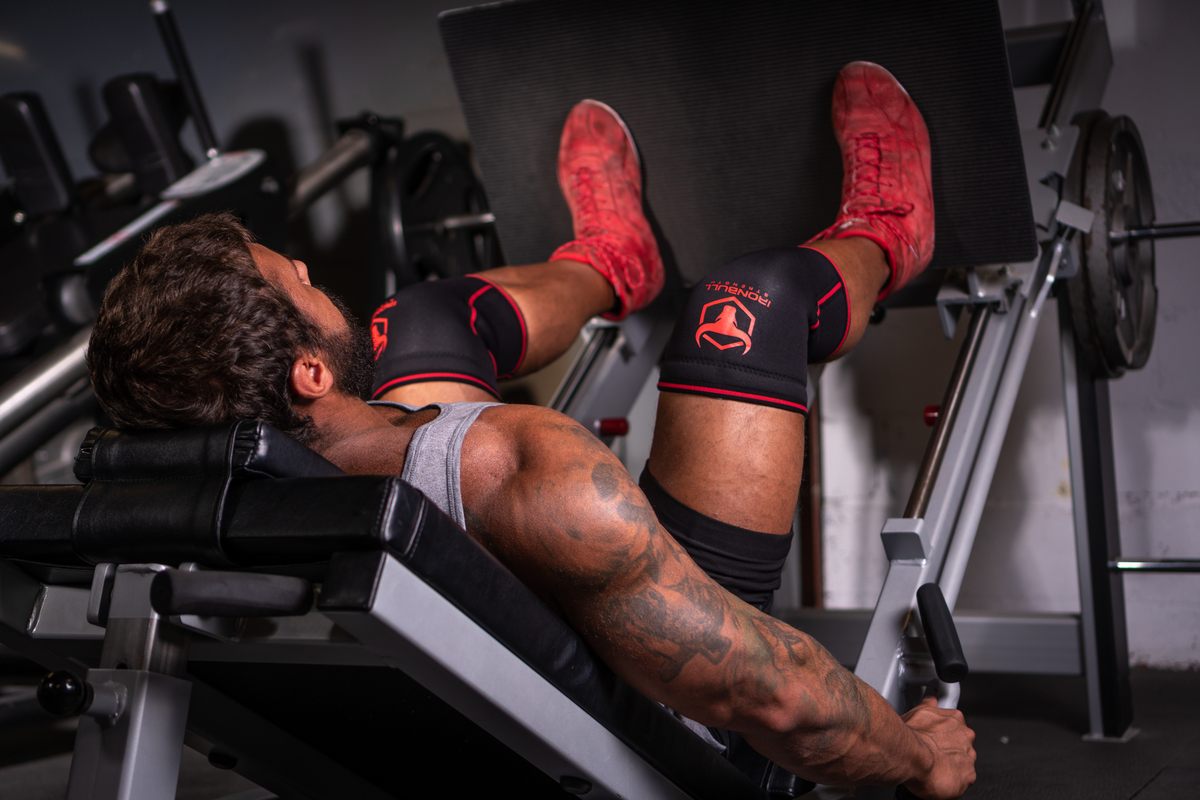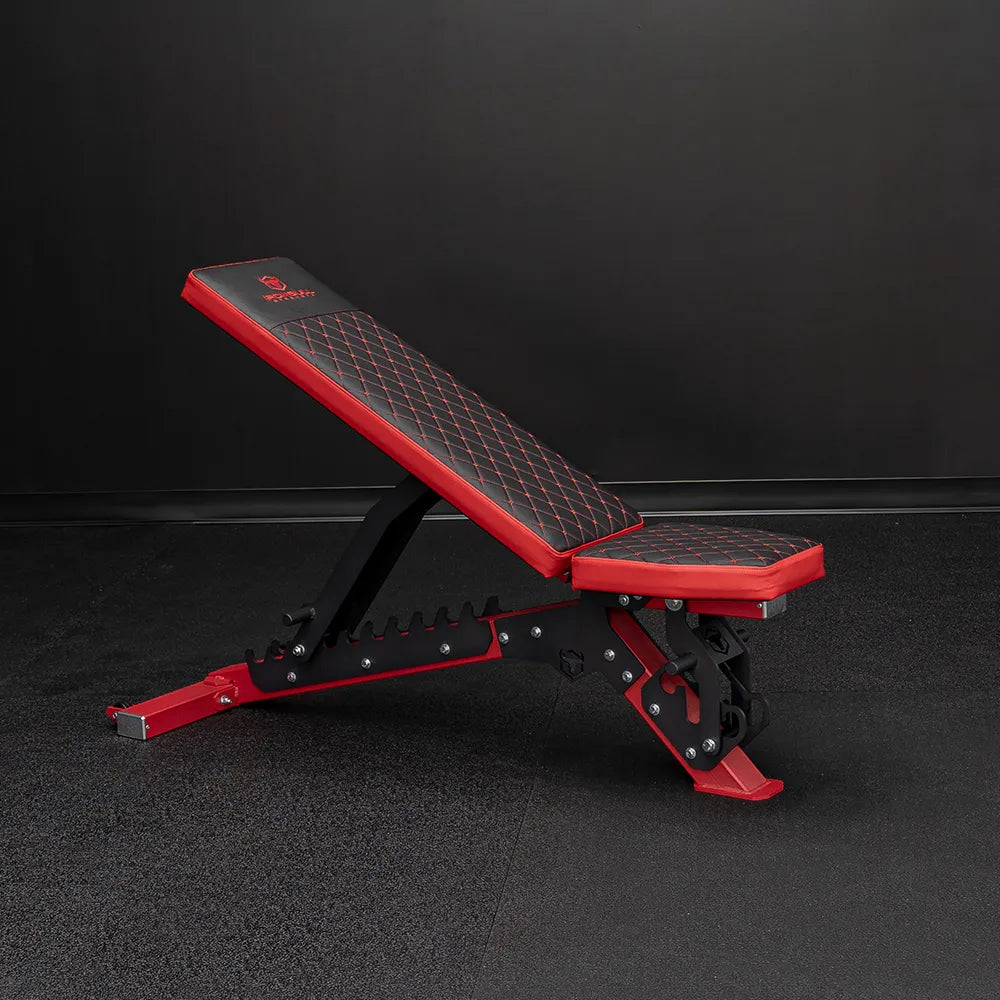Best Quad Exercises to Build Better Legs

You have very likely seen memes and heard jokes about skipping leg day, but let’s be serious. If you want a strong and complete body, then training legs is a must, and that includes the quadriceps. The quadriceps have that name because they are made up of four individual muscles - the rectus femoris, vastus intermedius, vastus lateralis, and the vastus medialis. You don’t have to train each individual muscle to build great quads, but you have to provide a great challenge to them if you want them to develop properly.

These four exercises are basics, but they are also the best when it comes to building bigger, stronger, and better quads. Master these four movements, and your results will speak for themselves the next time you go out in a pair of shorts.
A Word About Safety
Before we get into the movements, we need to talk about training accessories for a moment. Many lifters train the lower body with a weight belt, knee sleeves or knee wraps, and in some cases, both a belt and knee coverage. If you are a beginner and healthy overall, they are not necessary, but you can at least consider using them to prevent injury. If you have issues then you are working around, then using accessories is highly recommended.
If you need them or are considering them, Iron Bull Strength has very dependable belts and knee support that will provide great protection and support, allow you to have the most productive workouts possible while decreasing the risk of injury. If you are unsure about whether you need them or not, speak to your physician.
Squat
This is the king of lower body movements, and it really does do more than work the quadriceps. The hamstrings, glutes, core, back, and even the shoulders all play a part in the success of the squat. The late, great Ultimate Warrior once said “if all you did was squats, you would better yourself in mind, body, and soul.”
If you are reading this on Iron Bull Strength, then there is a good chance you know how to squat, but we are going to cover it for beginners and a possible refresher course for those that haven’t done them in a while.
How to Perform: The barbell should be slightly below shoulder height in a sturdy squat rack or on stands. Lower your head under the barbell and position it so it is even on your upper back and shoulder area. Your hands should be even holding the barbell as well. Lower your hips under and stand tall with the barbell to remove it from the rack. Take 1-3 steps back to position your feet evenly and support the weight.
[Related: How to Use a Squat Rack]
Begin the squat by taking a deep breath in and bending the knees while lowering your hips towards the floor. Keep your back as straight as possible and look ahead while going down. Once you reach the bottom, your thighs should be parallel with the floor. Once you reach this point, reverse the motion and return to the standing position you started with. Repeat for the desired reps and return the barbell to the rack when you are finished.
Bonus Tip: Want to make these even tougher? Do pause squats. When you descend into the hole, pause for a count of two to eliminate all momentum, then stand back up with the weight. Aside from the quads feeling even more load, the glutes will reap benefits of this as well.
[Related: Dependable Squat Racks Can Be Found HERE]
Front Squat
The front squat is a more challenging version because the weight can not rest on the back of your shoulders. The barbell will be across the front of the shoulders while you are holding it there. This version will place more emphasis on the quadriceps because the load will be more directly over them. This is a more advanced quad workout movement that can help promote stability, balance, and power.
How to Perform: Step up to the rack and place the bar on your upper chest and shoulder area. Cross your arms so the barbell can rest on the upper arms while your hands are holding the middle of the barbell. Lower your hips under the bar and pick it up off the rack. Take 1-3 steps back to assume a stance you feel comfortable using. The feet should be even before you begin.
Lower yourself down as you did the traditional squat, but pay attention to the barbell and maintain as much of a vertical base if possible. Keep the elbows up so the barbell does not come down. Once your thighs are parallel with the floor, return to the standing position. Repeat for the desired reps, and return the barbell to the rack when you are finished.
Bonus Tip: You should not try to front squat the same weight as you would on the back squat. Balancing the barbell is crucial and that requires the upper arms, shoulders, and core. Use less weight to get the most out of this. If needed, use a Smith Machine to help you master form before moving on to a barbell.
[Related: Smith Machine vs Squat Rack: Which is Better and Safer?]
Leg Press
The leg press gets a bad reputation because some lifters use it as an ego move to lift as much weight as possible with a minimal range of motion. Don’t let these bad apples keep you from using and reaping the benefits of it. When done correctly with a full range of motion, it can be very beneficial for the entire thigh area, especially the quads.
How to Perform: Sit in the seat and place your feet evenly on the footplate. Make sure your back is straight against the backpad of the seat and your glutes are seated properly. Don’t allow them to scoot forward. Once you are ready, push the footplate forward and release the safety arms so you have control of the weight.
Bend the knees and lower the weight as far down as you can without your hips coming up. Your knees should be in proximity of the shoulders at the bottom. Once you reach this position, push through your feet and press the sled back to the starting position. Don’t lock your knees out at the top. Repeat for the desired reps and lock the safety arms back into place when you are finished.
Bonus Tip: You can place your feet evenly on different parts of the footplate to feel the effects differently. If you place the feet higher, you may notice more hamstring activation. If you place them in the middle but turn your toes outward, you will feel more load on different sections of the thigh. Don’t be afraid to experiment with different foot positions to get the most out of the machine.
Leg Extension
Leg extensions can be used to prepare the knees for a compound movement like squats or isolate the quadriceps to fatigue the muscle at the end of a workout. The key to making this movement effective is doing them under control with moderate weight. You really want to make sure the quads are doing the brunt of the work while minimizing the toll on the knees.
How to Perform: Sit in the seat of the machine and place your feet behind the leg pad of the machine. You should be able to sit back on the seat without scooting your hips up. If you can’t adjust the seat to make sure you can. If there is a seat belt, secure it before beginning. Make sure you are holding the handles during the set.
Lift the footpad and straighten your legs until you feel the quads flexing. Pause for a moment to eliminate momentum before slowly lowering the pad back to the starting position. Either pause the movement before the pinned weight touches the stack or stop when you reach the bottom before beginning the next rep. Repeat for the desired reps.
Bonus Tip: You can also do these with one leg at a time to focus on each leg and not allow the other to provide support. This can help promote balance and symmetry as well as strengthen each quad on its own.
[Related: 6 Leg Extension Alternatives for Stronger and Bigger Legs]
Sample Workout
This workout can be performed on its own or as part of a larger lower body workout program. Make sure you warm-up with some form of cardio for around ten minutes and stretch adequately before going all in on this one. A couple of light sets to prepare the body for what is to come would also be a good move. Rest for two minutes between each set of these exercises.
| Exercise | Sets | Reps |
| Squat | 3 - 4 | 6 - 8 |
| Front Squat | 2 - 3 | 8 - 10 |
| Leg Press | 2 - 3 | 12 - 15 |
| Leg Extension | 2 - 3 | 15 - 20 |
Conclusion
These quad exercises can help you develop a great lower body. The movements may look simple, but they should be very challenging to do. In other words, don’t be afraid to push yourself with the weight and reps (but do it safely). If you give the proper effort and support the training with great recovery, you will see impressive legs that will make your body look and perform better in the long run.
Continue Reading










